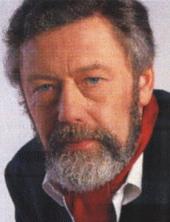Klaus Wunderlich was born 1931 in Chemnitz, East Germany as son of a police-inspector. At the age of 7, he received his first piano. In a few years he was able to grasp the basics, and become a competent player.
Klaus was discovered by the Municipal Theatre Group at the age of sixteen, and soon began to arrange and compose for dance-bands, eventually leaving with a group of fellow musicians for West Germany in 1951
After touring as a pianist and accordion player, Klaus was introduced to the Hammond Organ when they first came on the market in 1955, and soon took up a residency, and settled in Mannheim - at the Cabaret 'Simplicissimus' where audiences flocked to listen him play. Even then, his interpretations were so perfect that the sound of his first record caused a sensation. Klaus Wunderlich knew how to combine the musical side with the technical know-how of organ playing in an ingenious way.
Klaus was never satisfied with his playing, and as a result, he managed to imitate the sound of nearly all orchestral instruments on his organ. Success catapulted him into a very small group of top-stars, appearing on the international show-business circuit, and as a result, broadcasting stations were eager to acquire the musical and acoustic "treats" which Wunderlich recorded on tape, and Klaus and his Hammond become household names
In 1972, he stopped this hectic lifestyle, and built a Sound Studio in the basement of his house. It was there that he created his legendary "New Pop Organ Sound" by blending the sound of three different types of organ: The Wersi W248S, The Lowrey H25-3 and The Hammond H-100. In this way, he was able to recreate orchestral recordings by using the multi-playback process that and was now able to play all the parts himself, even the percussion. Klaus also experimented with MOOG Synthesizers and even enticed the good old piano to produce completely new, electronically-polished sounds. However, this sound could only be created in a studio - not played live on stage.
However in 1977, WERSI released a new generation of electronic organs - the HELIOS - which heralded a return to live concerts and television performances. In the capable hands of Klaus Wunderlich, this organ could sound like a full symphony orchestra. In April 1978, Klaus completely sold-out London Royal Albert Hall playing before an audience of over 6000 people.
In the course of time, the HELIOS Organ was not technically sufficient to comply with the current demands, and so Klaus initially added the digital BETA organ to his analogue HELIOS, then finally replaced both with the WERSI SPECTRA in 1988. Klaus always got the best out of his organs.
Incidentally, Wunderlich was a computer-freak. Klaus had four computers at home, he was a good programmer and knew all about the technology. Nevertheless - or perhaps even because of that - he didn't use them for his music!
"When I do my recordings, I really do play all instruments - the organ, the percussion, the small MOOG Synthesizer (for the bass) and the Wersi Pianostar (for the rhythm-guitar) - on my own. In my studio I use eight tracks. Everything is recorded separately and corrected if necessary, then finally mixed on a normal studiotape (two tracks, stereo)"
At the end of the seventies Klaus Wunderlich began to discover transcendental meditation. This brought about a turn in his attitude to life. "I have lost my aggressiveness and can now put more good vibrations into my music", he once said.
After his final tour in England in 1995 he wanted to retire, but instead retreated into his studio. Klaus was taken ill on October 28th 1997. He complained of feeling unwell and of pains throughout his body, shortly after that he suffered a severe heart attack and died, aged 66 years old.
